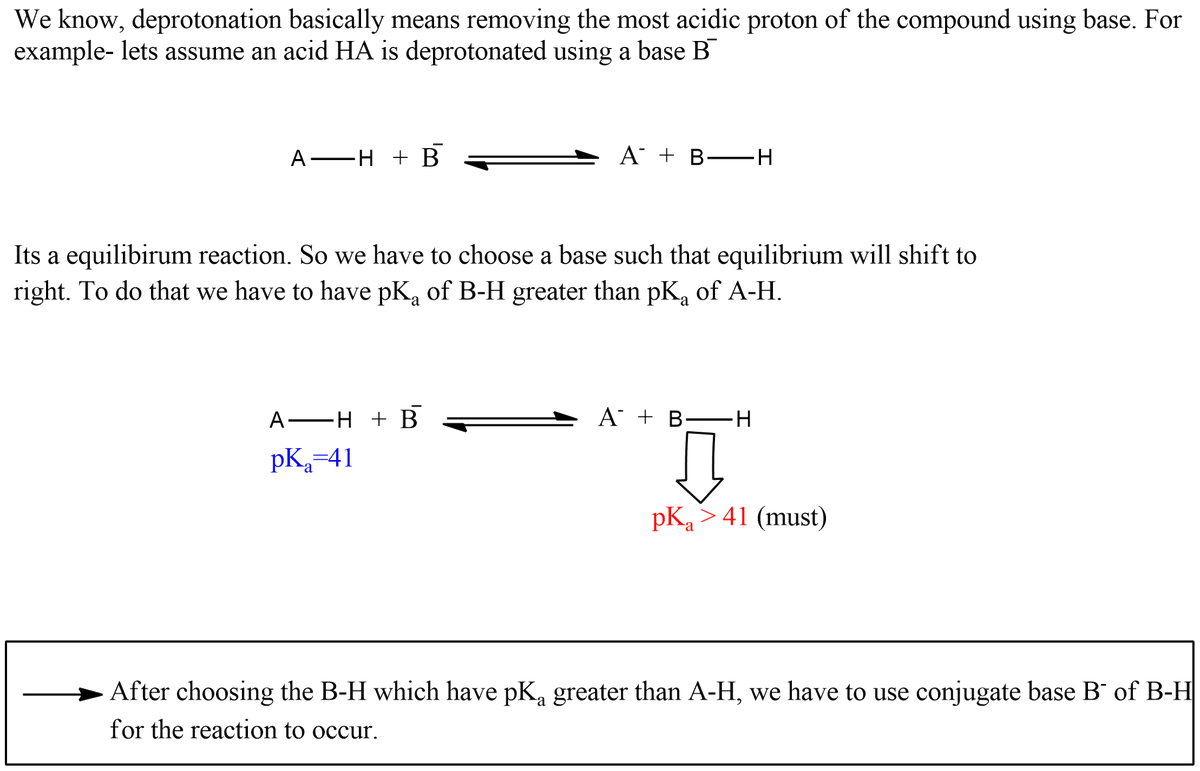The most acidic proton on the molecule below has pK 41. Which of the following bases are capable of deprotonating the proton? Check all that apply. Note: Reference the pK of selected organic compounds table for additional information. Acid CH3CH₂OH 16 H₂CO3 H₂O H₂ PK value C4H10 6.4 14 35 50
The most acidic proton on the molecule below has pK 41. Which of the following bases are capable of deprotonating the proton? Check all that apply. Note: Reference the pK of selected organic compounds table for additional information. Acid CH3CH₂OH 16 H₂CO3 H₂O H₂ PK value C4H10 6.4 14 35 50
Chemistry
10th Edition
ISBN:9781305957404
Author:Steven S. Zumdahl, Susan A. Zumdahl, Donald J. DeCoste
Publisher:Steven S. Zumdahl, Susan A. Zumdahl, Donald J. DeCoste
Chapter1: Chemical Foundations
Section: Chapter Questions
Problem 1RQ: Define and explain the differences between the following terms. a. law and theory b. theory and...
Related questions
Question
1)

Transcribed Image Text:### Proton Deprotonation Activity
**Question:**
The most acidic proton on the molecule below has a \( pK_a \) of 41. Which of the following bases are capable of deprotonating the proton? Check all that apply.
**Note:** Reference the \( pK_a \) of selected organic compounds table for additional information.
#### Table: \( pK_a \) Values of Selected Acids
| Acid | \( pK_a \) Value |
|------------|------------------|
| \( \text{CH}_3\text{CH}_2\text{OH} \) | 16 |
| \( \text{H}_2\text{CO}_3 \) | 6.4 |
| \( \text{H}_2\text{O} \) | 14 |
| \( \text{H}_2 \) | 35 |
| \( \text{C}_4\text{H}_{10} \) | 50 |
#### Explanation:
In the table provided, each row lists an acid along with its corresponding \( pK_a \) value. The objective is to determine which bases (conjugate bases of the acids listed) can deprotonate a proton with a \( pK_a \) of 41. A base can deprotonate the proton if its conjugate acid has a lower \( pK_a \) value than 41 because it indicates a stronger acid.
#### Graphical Element:
- **Diagram:** There is a hexagonal structure representing a benzene ring with an additional line indicating a substituent group, which is likely a part of the molecule discussed.
**Analysis:**
- Ethanol (\( \text{CH}_3\text{CH}_2\text{OH} \)), Carbonic acid (\( \text{H}_2\text{CO}_3 \)), and Water (\( \text{H}_2\text{O} \)) all have \( pK_a \) values considerably lower than 41, making their conjugate bases strong enough to deprotonate the benzene-ring molecule’s proton.
- Hydrogen (\( \text{H}_2 \)) with a \( pK_a \) of 35 is also capable of deprotonating the proton.
- Butane (\( \text{C}_4\text{H}_{10

Transcribed Image Text:The image presents a multiple-choice question with the following options for selection regarding chemical compounds:
1. □ BuLi \((C_4H_9Li)\)
2. □ NaOH
3. □ NaHCO₃
4. □ NaH
5. □ NaOCH₂CH₃
6. □ None of the above
There are no graphs or diagrams accompanying this text.
Expert Solution
Step 1: Introduce Concept of deprotonation

Step by step
Solved in 3 steps with 2 images

Knowledge Booster
Learn more about
Need a deep-dive on the concept behind this application? Look no further. Learn more about this topic, chemistry and related others by exploring similar questions and additional content below.Recommended textbooks for you

Chemistry
Chemistry
ISBN:
9781305957404
Author:
Steven S. Zumdahl, Susan A. Zumdahl, Donald J. DeCoste
Publisher:
Cengage Learning

Chemistry
Chemistry
ISBN:
9781259911156
Author:
Raymond Chang Dr., Jason Overby Professor
Publisher:
McGraw-Hill Education

Principles of Instrumental Analysis
Chemistry
ISBN:
9781305577213
Author:
Douglas A. Skoog, F. James Holler, Stanley R. Crouch
Publisher:
Cengage Learning

Chemistry
Chemistry
ISBN:
9781305957404
Author:
Steven S. Zumdahl, Susan A. Zumdahl, Donald J. DeCoste
Publisher:
Cengage Learning

Chemistry
Chemistry
ISBN:
9781259911156
Author:
Raymond Chang Dr., Jason Overby Professor
Publisher:
McGraw-Hill Education

Principles of Instrumental Analysis
Chemistry
ISBN:
9781305577213
Author:
Douglas A. Skoog, F. James Holler, Stanley R. Crouch
Publisher:
Cengage Learning

Organic Chemistry
Chemistry
ISBN:
9780078021558
Author:
Janice Gorzynski Smith Dr.
Publisher:
McGraw-Hill Education

Chemistry: Principles and Reactions
Chemistry
ISBN:
9781305079373
Author:
William L. Masterton, Cecile N. Hurley
Publisher:
Cengage Learning

Elementary Principles of Chemical Processes, Bind…
Chemistry
ISBN:
9781118431221
Author:
Richard M. Felder, Ronald W. Rousseau, Lisa G. Bullard
Publisher:
WILEY